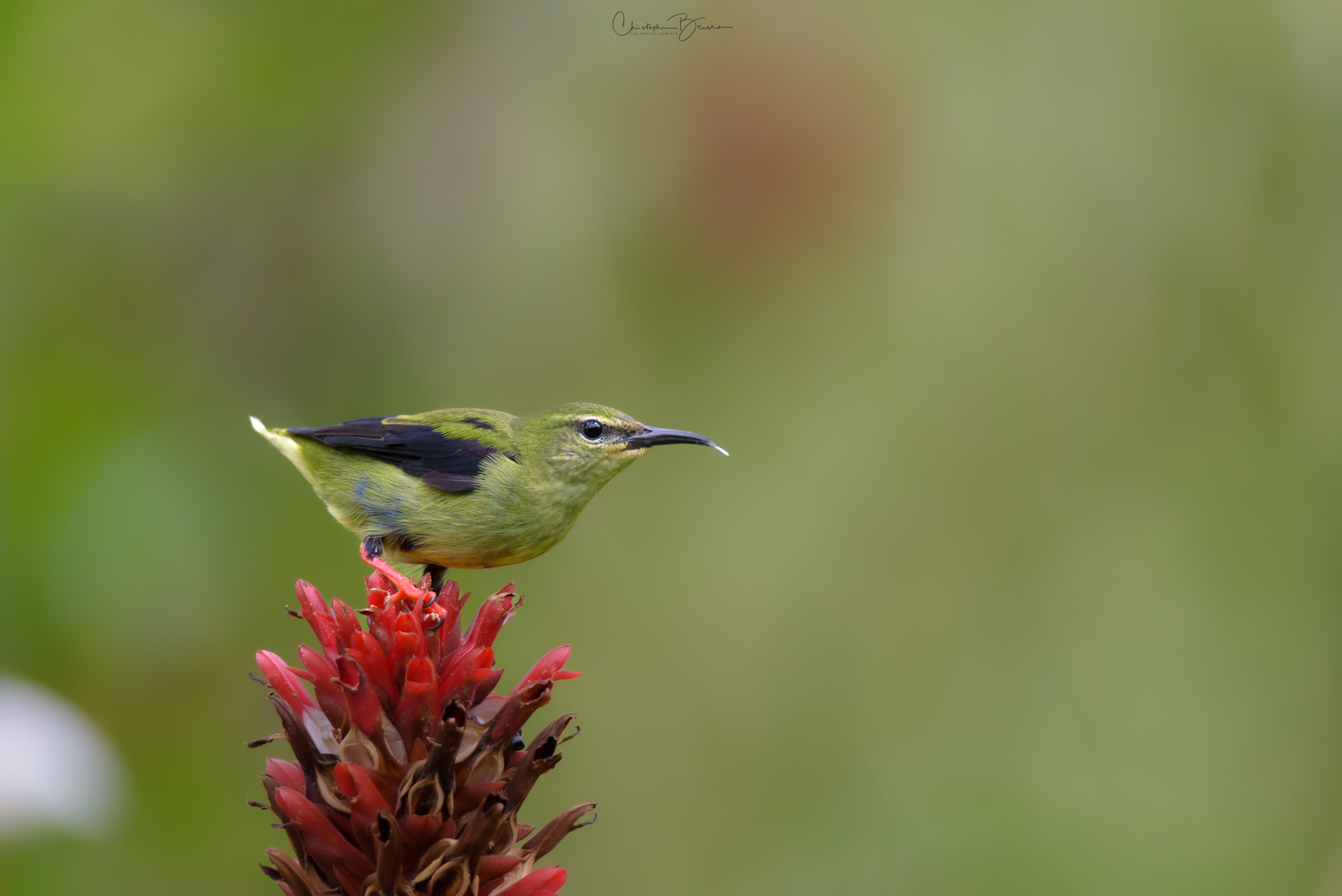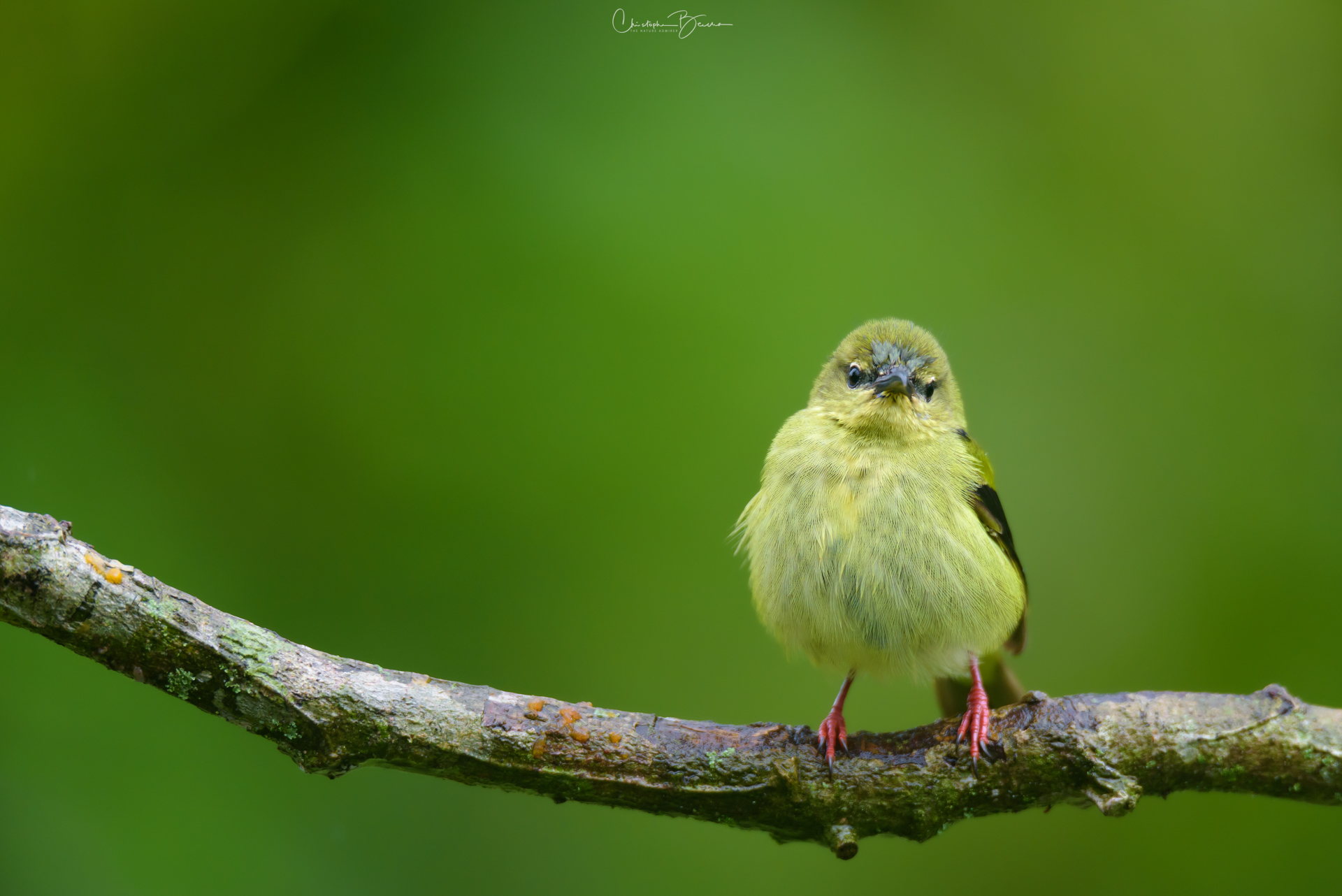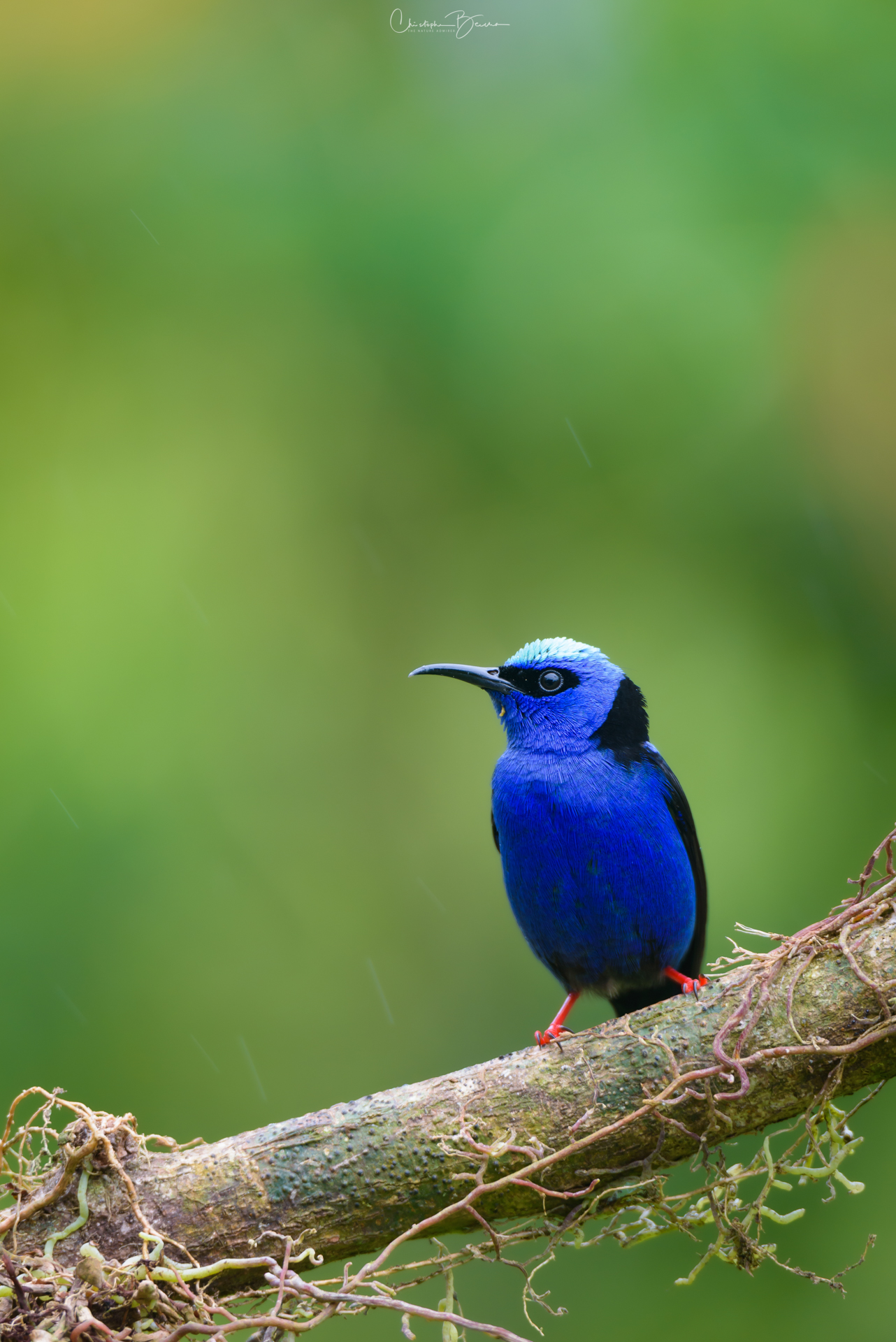The moment I saw this bird for the first time, I knew it would become my favorite. It is fairly small, yet the blue body and red legs of the male just pop out in their normal habitat, which is fairly green. The female is more difficult to spot, since most of the body is dark green, and the legs are dull red, even brownish. And there is more, because the juvenile male starts with the same green color as the female, however as it matures it gets the blue body and bright red legs. After the breeding season, the male again turns green, but keeps the red legs. This means that males can also be seen in various molting stages, with patches of green, blue and black all over the body.
Note that while the Red-legged Honeycreeper is in the Tanager family, its body shape is slimmer and is in general smaller than the Tanagers. The closest one in size is the Plain-colored Tanager, however the body shape is entirely different, with shorter bill and fluffier plumage. In Costa Rica, there are two other Honeycreeper species, the Shining Honeycreeper (which belongs to the same Cyanerpes genus) with its yellow legs, and the Green Honeycreeper (which belongs to the Chlorosphanes genus), with a green body.

















Leave a comment